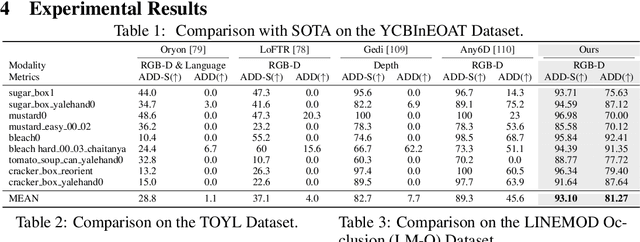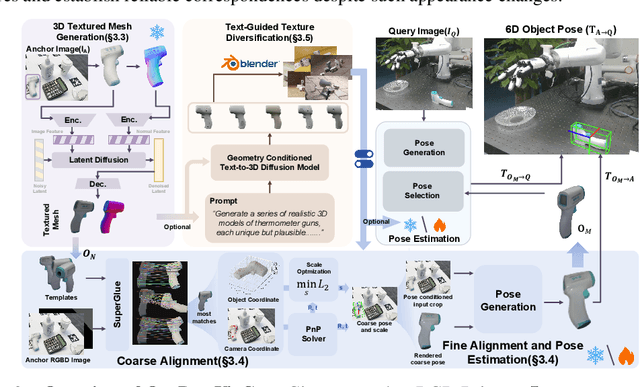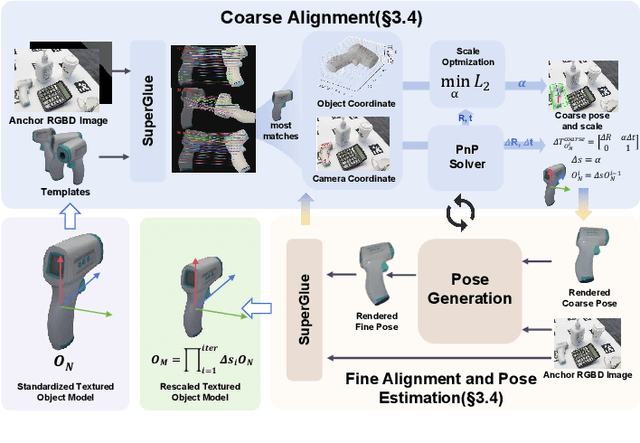Nan Wang
University of California, Santa Cruz
Fast Reconstruction of Motion-Corrupted Data with Mobile-GRAPPA: Motion and dB0 Inhomogeneity Correction Leveraging Efficient GRAPPA
Nov 09, 2025Abstract:Advanced motion navigations now enable rapid tracking of subject motion and dB0-induced phase, but accurately incorporating this high-temporal-resolution information into SENSE (Aligned-SENSE) is often computationally prohibitive. We propose "Mobile-GRAPPA", a k-space "cleaning" approach that uses local GRAPPA operators to remove motion and dB0 related corruption so that the resulting data can be reconstructed with standard SENSE. We efficiently train a family of k-space-position-specific Mobile-GRAPPA kernels via a lightweight multilayer perceptron (MLP) and apply them across k-space to generate clean data. In experiments on highly motion-corrupted 1-mm whole-brain GRE (Tacq = 10 min; 1,620 motion/dB0 trackings) and EPTI (Tacq = 2 min; 544 trackings), Mobile-GRAPPA enabled accurate reconstruction with negligible time penalty, whereas full Aligned-SENSE was impractical (reconstruction times > 10 h for GRE and > 10 days for EPTI). These results show that Mobile-GRAPPA incorporates detailed motion and dB0 tracking into SENSE with minimal computational overhead, enabling fast, high-quality reconstructions of challenging data.
One View, Many Worlds: Single-Image to 3D Object Meets Generative Domain Randomization for One-Shot 6D Pose Estimation
Sep 09, 2025



Abstract:Estimating the 6D pose of arbitrary unseen objects from a single reference image is critical for robotics operating in the long-tail of real-world instances. However, this setting is notoriously challenging: 3D models are rarely available, single-view reconstructions lack metric scale, and domain gaps between generated models and real-world images undermine robustness. We propose OnePoseViaGen, a pipeline that tackles these challenges through two key components. First, a coarse-to-fine alignment module jointly refines scale and pose by combining multi-view feature matching with render-and-compare refinement. Second, a text-guided generative domain randomization strategy diversifies textures, enabling effective fine-tuning of pose estimators with synthetic data. Together, these steps allow high-fidelity single-view 3D generation to support reliable one-shot 6D pose estimation. On challenging benchmarks (YCBInEOAT, Toyota-Light, LM-O), OnePoseViaGen achieves state-of-the-art performance far surpassing prior approaches. We further demonstrate robust dexterous grasping with a real robot hand, validating the practicality of our method in real-world manipulation. Project page: https://gzwsama.github.io/OnePoseviaGen.github.io/
SciGPT: A Large Language Model for Scientific Literature Understanding and Knowledge Discovery
Sep 09, 2025Abstract:Scientific literature is growing exponentially, creating a critical bottleneck for researchers to efficiently synthesize knowledge. While general-purpose Large Language Models (LLMs) show potential in text processing, they often fail to capture scientific domain-specific nuances (e.g., technical jargon, methodological rigor) and struggle with complex scientific tasks, limiting their utility for interdisciplinary research. To address these gaps, this paper presents SciGPT, a domain-adapted foundation model for scientific literature understanding and ScienceBench, an open source benchmark tailored to evaluate scientific LLMs. Built on the Qwen3 architecture, SciGPT incorporates three key innovations: (1) low-cost domain distillation via a two-stage pipeline to balance performance and efficiency; (2) a Sparse Mixture-of-Experts (SMoE) attention mechanism that cuts memory consumption by 55\% for 32,000-token long-document reasoning; and (3) knowledge-aware adaptation integrating domain ontologies to bridge interdisciplinary knowledge gaps. Experimental results on ScienceBench show that SciGPT outperforms GPT-4o in core scientific tasks including sequence labeling, generation, and inference. It also exhibits strong robustness in unseen scientific tasks, validating its potential to facilitate AI-augmented scientific discovery.
zkUnlearner: A Zero-Knowledge Framework for Verifiable Unlearning with Multi-Granularity and Forgery-Resistance
Sep 08, 2025Abstract:As the demand for exercising the "right to be forgotten" grows, the need for verifiable machine unlearning has become increasingly evident to ensure both transparency and accountability. We present {\em zkUnlearner}, the first zero-knowledge framework for verifiable machine unlearning, specifically designed to support {\em multi-granularity} and {\em forgery-resistance}. First, we propose a general computational model that employs a {\em bit-masking} technique to enable the {\em selectivity} of existing zero-knowledge proofs of training for gradient descent algorithms. This innovation enables not only traditional {\em sample-level} unlearning but also more advanced {\em feature-level} and {\em class-level} unlearning. Our model can be translated to arithmetic circuits, ensuring compatibility with a broad range of zero-knowledge proof systems. Furthermore, our approach overcomes key limitations of existing methods in both efficiency and privacy. Second, forging attacks present a serious threat to the reliability of unlearning. Specifically, in Stochastic Gradient Descent optimization, gradients from unlearned data, or from minibatches containing it, can be forged using alternative data samples or minibatches that exclude it. We propose the first effective strategies to resist state-of-the-art forging attacks. Finally, we benchmark a zkSNARK-based instantiation of our framework and perform comprehensive performance evaluations to validate its practicality.
An Agentic Model Context Protocol Framework for Medical Concept Standardization
Sep 04, 2025Abstract:The Observational Medical Outcomes Partnership (OMOP) common data model (CDM) provides a standardized representation of heterogeneous health data to support large-scale, multi-institutional research. One critical step in data standardization using OMOP CDM is the mapping of source medical terms to OMOP standard concepts, a procedure that is resource-intensive and error-prone. While large language models (LLMs) have the potential to facilitate this process, their tendency toward hallucination makes them unsuitable for clinical deployment without training and expert validation. Here, we developed a zero-training, hallucination-preventive mapping system based on the Model Context Protocol (MCP), a standardized and secure framework allowing LLMs to interact with external resources and tools. The system enables explainable mapping and significantly improves efficiency and accuracy with minimal effort. It provides real-time vocabulary lookups and structured reasoning outputs suitable for immediate use in both exploratory and production environments.
FFT-MoE: Efficient Federated Fine-Tuning for Foundation Models via Large-scale Sparse MoE under Heterogeneous Edge
Aug 26, 2025Abstract:As FMs drive progress toward Artificial General Intelligence (AGI), fine-tuning them under privacy and resource constraints has become increasingly critical particularly when highquality training data resides on distributed edge devices. Federated Learning (FL) offers a compelling solution through Federated Fine-Tuning (FFT), which enables collaborative model adaptation without sharing raw data. Recent approaches incorporate Parameter-Efficient Fine-Tuning (PEFT) techniques such as Low Rank Adaptation (LoRA) to reduce computational overhead. However, LoRA-based FFT faces two major limitations in heterogeneous FL environments: structural incompatibility across clients with varying LoRA configurations and limited adaptability to non-IID data distributions, which hinders convergence and generalization. To address these challenges, we propose FFT MoE, a novel FFT framework that replaces LoRA with sparse Mixture of Experts (MoE) adapters. Each client trains a lightweight gating network to selectively activate a personalized subset of experts, enabling fine-grained adaptation to local resource budgets while preserving aggregation compatibility. To further combat the expert load imbalance caused by device and data heterogeneity, we introduce a heterogeneity-aware auxiliary loss that dynamically regularizes the routing distribution to ensure expert diversity and balanced utilization. Extensive experiments spanning both IID and non-IID conditions demonstrate that FFT MoE consistently outperforms state of the art FFT baselines in generalization performance and training efficiency.
jina-embeddings-v4: Universal Embeddings for Multimodal Multilingual Retrieval
Jun 24, 2025Abstract:We introduce jina-embeddings-v4, a 3.8 billion parameter multimodal embedding model that unifies text and image representations through a novel architecture supporting both single-vector and multi-vector embeddings in the late interaction style. The model incorporates task-specific Low-Rank Adaptation (LoRA) adapters to optimize performance across diverse retrieval scenarios, including query-document retrieval, semantic text similarity, and code search. Comprehensive evaluations demonstrate that jina-embeddings-v4 achieves state-of-the-art performance on both single-modal and cross-modal retrieval tasks, with particular strength in processing visually rich content such as tables, charts, diagrams, and mixed-media formats. To facilitate evaluation of this capability, we also introduce Jina-VDR, a novel benchmark specifically designed for visually rich image retrieval.
Unifying Appearance Codes and Bilateral Grids for Driving Scene Gaussian Splatting
Jun 06, 2025Abstract:Neural rendering techniques, including NeRF and Gaussian Splatting (GS), rely on photometric consistency to produce high-quality reconstructions. However, in real-world scenarios, it is challenging to guarantee perfect photometric consistency in acquired images. Appearance codes have been widely used to address this issue, but their modeling capability is limited, as a single code is applied to the entire image. Recently, the bilateral grid was introduced to perform pixel-wise color mapping, but it is difficult to optimize and constrain effectively. In this paper, we propose a novel multi-scale bilateral grid that unifies appearance codes and bilateral grids. We demonstrate that this approach significantly improves geometric accuracy in dynamic, decoupled autonomous driving scene reconstruction, outperforming both appearance codes and bilateral grids. This is crucial for autonomous driving, where accurate geometry is important for obstacle avoidance and control. Our method shows strong results across four datasets: Waymo, NuScenes, Argoverse, and PandaSet. We further demonstrate that the improvement in geometry is driven by the multi-scale bilateral grid, which effectively reduces floaters caused by photometric inconsistency.
Uni-AIMS: AI-Powered Microscopy Image Analysis
May 11, 2025Abstract:This paper presents a systematic solution for the intelligent recognition and automatic analysis of microscopy images. We developed a data engine that generates high-quality annotated datasets through a combination of the collection of diverse microscopy images from experiments, synthetic data generation and a human-in-the-loop annotation process. To address the unique challenges of microscopy images, we propose a segmentation model capable of robustly detecting both small and large objects. The model effectively identifies and separates thousands of closely situated targets, even in cluttered visual environments. Furthermore, our solution supports the precise automatic recognition of image scale bars, an essential feature in quantitative microscopic analysis. Building upon these components, we have constructed a comprehensive intelligent analysis platform and validated its effectiveness and practicality in real-world applications. This study not only advances automatic recognition in microscopy imaging but also ensures scalability and generalizability across multiple application domains, offering a powerful tool for automated microscopic analysis in interdisciplinary research.
Improving Significant Wave Height Prediction Using Chronos Models
Apr 23, 2025Abstract:Accurate wave height prediction is critical for maritime safety and coastal resilience, yet conventional physics-based models and traditional machine learning methods face challenges in computational efficiency and nonlinear dynamics modeling. This study introduces Chronos, the first implementation of a large language model (LLM)-powered temporal architecture (Chronos) optimized for wave forecasting. Through advanced temporal pattern recognition applied to historical wave data from three strategically chosen marine zones in the Northwest Pacific basin, our framework achieves multimodal improvements: (1) 14.3% reduction in training time with 2.5x faster inference speed compared to PatchTST baselines, achieving 0.575 mean absolute scaled error (MASE) units; (2) superior short-term forecasting (1-24h) across comprehensive metrics; (3) sustained predictive leadership in extended-range forecasts (1-120h); and (4) demonstrated zero-shot capability maintaining median performance (rank 4/12) against specialized operational models. This LLM-enhanced temporal modeling paradigm establishes a new standard in wave prediction, offering both computationally efficient solutions and a transferable framework for complex geophysical systems modeling.
 Add to Chrome
Add to Chrome Add to Firefox
Add to Firefox Add to Edge
Add to Edge